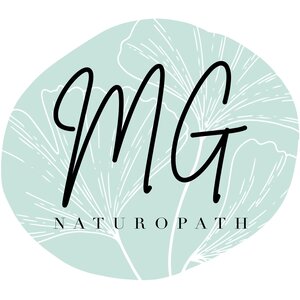Winter has definitely arrived here in Australia, and along with it, our skin has turned pale, flaky and dry (I am sure that this is not just me)!
There are many possible causes for dry skin, so first and foremost, it's important to educate yourself and figure out what's causing your issues. The best way to treat dry skin is from the inside out, but conversely, it’s incredibly effective to treat dry skin from the outside in.
Anything from humidity to steamy showers to conventional soap can aggravate skin, and something as simple as drinking more water can treat it.
So how do we treat dry, itchy skin naturally and for good? Here are some ways that have truly changed my skin and my clients skin for the best ... forever!
1. Calendula Cream
Calendula is a soft orange flower which blooms with each new moon. It is soothing and moisturising and has a strong history of use on the skin. It is anti-inflammatory and mildly pain relieving.
Calendula improves neovascularisation in tissue, or the growth of new tiny capillaries, which improves blood circulation and helps skin wounds to heal.
It is perfect for dry, irritated and chafed winter skin, suitable as a body cream and a face cream.
Grab yours from our website here.
2. Fish oil and marine collagen
Fish oil and marine collagen are two very effective products to moisturise skin from the inside out. On their own, they work well, but when you combine them, they can lead to a near-perfect complexion.
High in omegas, fish oil will help your cells get and maintain their health, lead to supple cell membranes (which equals plump, hydrated skin), and keep moisture locked in to your skin. I find that it helps with everything from lightening dark circles to dry skin to acne. And since marine collagen is a fibrous protein extracted from the skin of a fish, when you add marine collagen to the mix it'll help slow the effects of ageing and reverse environmental damage (such as dry skin!).
ALWAYS purchase the best quality and do make an appointment with me so I can recommend you suitable supplements and herbs for your condition.
3. Hydrating masks
Using these is a great, easy way to combat dry skin, especially if you're going the DIY route and can control the ingredients. If you want to purchase a mask, look for ingredients like honey, sea kelp, oil, or berries, as they're all natural ways to treat the condition. To make your own, mix equal parts manuka honey, organic olive oil, raspberries, lemon, and turmeric. Whip them together in a bowl and then apply to face and dry areas for a potent anti-inflammatory, hydrating treatment.
4. Water
If you do nothing else for your skin, at least make sure you're drinking plenty of filtered water. Almost 60 percent of our bodies are made of water, so it's crucial to the health of not only our skin, but to every single cell we're made up of.
First and foremost, water helps to flush toxins from your body, so any nasties hiding inside that might be contributing to your dry skin are likely to get washed out with enough hydration. Water is also your skin's best friend, so drink up!
In terms of the water you're washing yourself with, it might be time to invest in a filtered shower head. Many cities have "hard" water, meaning it's high in mineral content. These minerals have the ability to dry out your skin or even leave a film on your body that will suck moisture over time. Where we live, the water is highly chlorinated which is only going to add to your dryness! You can buy filters easily online.
5. Moisturising soap
Using the correct soap is essential to winning your dry skin battle. Many soaps can be dehydrating because they’re conventionally designed to be industrial and contain sodium, which is disruptive to skin. Repeated use of this kind of soap will dry the skin out since sodium interferes with the body’s natural protective layer that keeps moisture in. Look for moisturising soap in which the first or second ingredient is a natural oil or butter, and that contains essential oils. If you can find some without water or sodium, even better!
If you’re doing all these things and still experiencing dry skin, you might want to try eliminating these things from your diet to see a difference:
Coffee
I know life without this seems daunting, but doesn’t a life with dull skin sound worse? If you’re doing all of the above and still experiencing dry, dull, or ageing skin, look no further. Coffee is an appetite depressant as well as a diuretic, meaning it depletes the amount of water your body gets, needs, and holds on to.
Caffeine
Speaking of caffeine-free, this dehydrating little bugger is sneaking into your life in all kinds of ways ... not just through your morning cup! Try other caffeinated drinks with ginseng, ginger, or lemon water for a natural boost of energy and a glowing complexion!
Alcohol
You wouldn’t put alcohol on your face when you’re battling dry skin, so why put it in your body? Alcohol is one of the biggest roadblocks we face when it comes to our skin. If you must drink, try drinking an alcohol that's organic or comes from a plant (like organic wine or gluten-free beer) instead of hard alcohol. This will minimise the damage, but the only way to completely avoid the risk is to stop drinking completely. I know it’s a bit of a bummer, but at least eliminating some days (or some hours) of drinking in a week can truly show a drastic improvement! Your skin will thank you.
And of course, if dry skin or other skin-related conditions are bothering you, be sure to make an appointment with me so we can see what’s going on.
